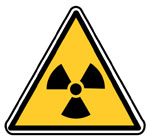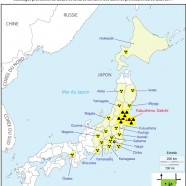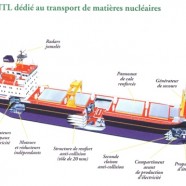The waste from the Japanese earthquake and tsunami
1. Radioactive contamination
On 11 March 2011 there was a legal vacuum in Japan concerning radioactive waste resulting from a nuclear disaster. Current waste management Law places technical and financial responsibility for waste from natural disasters with local authorities. However, this excludes radioactive waste. The Law on rehabilitation of contaminated soil excludes from its scope radioactive soils and waste. The Law on the management of radioactive materials and waste only concerns those inside the nuclear plants.
Whaling Summit at the Channel Island Jersey
The 63rd annual meeting of the International Whaling Commission (IWC) will take place from July 11th to 14th on the Channel Island Jersey. Robin des Bois would like to take this opportunity to express strong concerns about the deterioration of sanitary state of whales following the tsunami and nuclear accident at Fukushima Daiichi which hit Japan and the North Pacific.
1- Radioactive Pollution
Iodine-131, cesium 137, strontium 90, plutonium are among the identified radionuclides which are spreading across Japanese soil by atmospheric emissions. The Northwest Pacific has become primary recipient for not only liquid discharges coming from Fukushima but also for atmospheric fallout. The sources of whale contamination are multiple: permanent contact with artificial radioactivity, ingestion of contaminated plankton, prey and waste, and the transmission of radioactivity to calves during nursing periods. The external and internal effects of this contamination are potentially mutagenic (mutation of the gene pool), teratogenic (abnormal development of the embryo) and carcinogenic, all very serious impacts on whale populations whose future before the disaster of March 2011 was already menaced.
A nuclear waste to be broken up in Belgium
According to the Northwest Evening Mail, the Pacific Sandpiper is to be demolished in Belgium. The Pacific Sandpiper belongs to the English ship company, Pacific Nuclear Transport Ltd (PNTL), and was launched in 1985. She measures 104 meters long with a light weight of 3,950 tons. This floating nuclear waste, the Pacific Sandpiper, transported a total of 500 radioactive spent fuel containers throughout her career. These shipments were operated within the scope of reprocessing contracts with the Japanese electricity producing companies TEPCO and Kansaï, from Japan to France for Cogema-AREVA and from Japan to the UK for BNFL (British Nuclear Fuels Limited). In January 2004, the ship also transported vitrified nuclear waste, which originated from the AREVA factory in La Hague, (France) between Cherbourg and Japan.
Millions of Stowaway Passengers Circling Around the Pacific Ocean
The tsunami which followed the Japanese earthquake devastated around 300km of coastal cities, towns, farmlands and greenhouses along Japan’s Pacific coastline. The wave was reported to have spread up to 10km (six miles) inland and inundated around 500km². Not only did the earthquake and tsunami create an estimated 25 million tonnes of rubble, but when the tsunami receded it dragged with it countless quantities of waste in the flooded zone.
The After Shock
Climatic, geological, or anthropogenic natural disasters produce in a couple of seconds, hours or days, enormous amounts of waste, so much so that authorities are unable to handle the quantity with ordinary means. The rupture of “lifelines”, namely water, electricity, transportation routes and communication lines, send survivors into a deep confusion. The accumulation of rubble and waste increases the shock of the populations and postpones the first steps towards the return to normalcy.
The 3 million tonnes of rubble generated by the earthquake in Los Angeles in January 1994 led the city to reinforce and multiply its recycling capacities. Provisional transit and elimination sites for future earthquakes were pre-selected.













